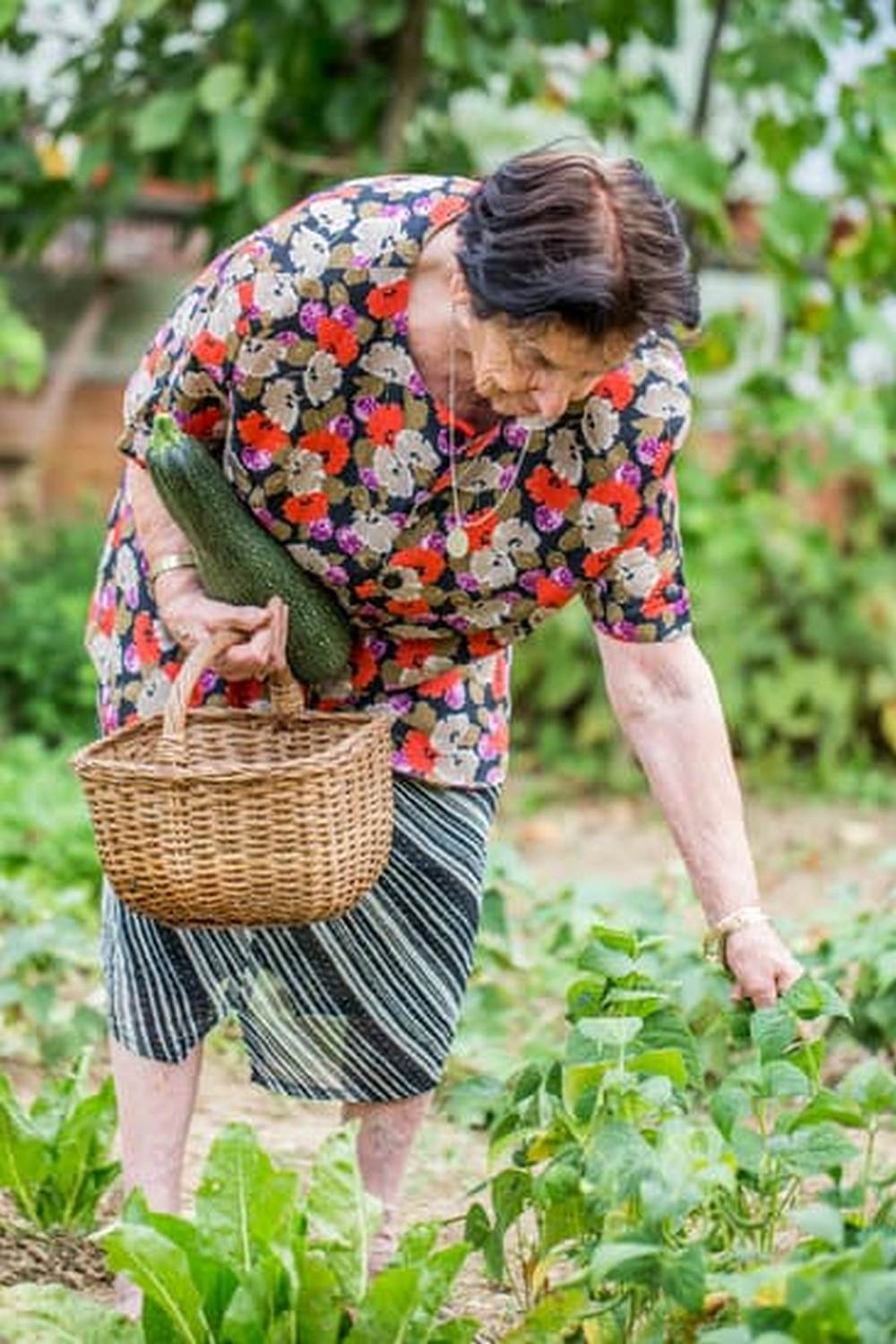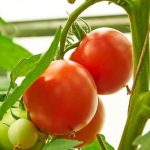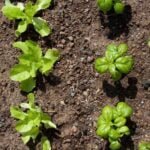Are you a vegetable gardener in Arizona looking for guidance on when to plant and harvest your crops? Look no further. This article will provide you with all the information you need to create a successful vegetable garden in Arizona. From selecting the right vegetables to dealing with specific pests and diseases, we have got you covered.
Arizona’s climate and growing seasons present unique challenges for vegetable gardeners. With its hot and dry weather, it’s essential to choose the right vegetables and follow a precise planting schedule to ensure a bountiful harvest. In this article, we will explore how to navigate Arizona’s climate and growing seasons effectively, so you can enjoy fresh, homegrown produce year-round.
From preparing the soil to watering and irrigation tips, we will discuss everything you need to know about creating a thriving vegetable garden in Arizona. We’ll also provide resources for local gardening clubs and seed suppliers, so you can connect with other passionate gardeners in your area and access top-quality seeds for your garden. So roll up your sleeves and get ready to dive into the world of vegetable gardening in Arizona.
Choosing the Right Vegetables for Arizona
When it comes to choosing the right vegetables for your Arizona garden, it’s important to select varieties that can thrive in the state’s hot and dry climate. Here are some top vegetables that are well-suited for Arizona:
- Tomatoes: Look for heat-tolerant varieties such as Roma, Celebrity, or Sun Gold.
- Peppers: Opt for bell peppers or chili peppers that can handle the hot temperatures.
- Squash: Choose zucchini or yellow squash, which are known to do well in Arizona’s climate.
- Cucumbers: Consider planting Armenian cucumbers or other heat-resistant varieties.
Additionally, it’s important to consider the timing of planting these vegetables in Arizona. The state’s growing season varies based on its different regions, so be sure to consult a vegetable gardener’s calendar for Arizona to determine the best times for planting each type of vegetable.
In addition to selecting heat-tolerant and drought-resistant vegetables, it’s also a good idea to incorporate some native plants into your garden. Indigenous crops such as tepary beans, chiltepin peppers, and Navajo melons have adapted to survive in Arizona’s harsh conditions and can be a valuable addition to your vegetable garden.
By choosing the right vegetables for Arizona’s climate and growing seasons, you can set yourself up for a successful harvest while minimizing challenges related to temperature and water availability.
Preparing the Soil for a Successful Vegetable Garden
When it comes to preparing the soil for a successful vegetable garden in Arizona, there are a few key factors to keep in mind. First and foremost, it’s important to understand the specific characteristics of Arizona’s soil, which can vary greatly depending on the region.
In general, Arizona soil tends to be alkaline and low in organic matter, which can pose challenges for growing vegetables. However, with the right approach, it is possible to improve the soil and create an ideal environment for your vegetable garden.
One effective strategy for improving Arizona soil is to add organic matter in the form of compost or well-rotted manure. This not only helps to increase the nutrient content of the soil but also improves its structure and moisture retention.
Additionally, incorporating organic matter can help to balance the pH levels of alkaline soil, making it more suitable for vegetable growth. It’s recommended to work at least 3 inches of compost into the top 6-8 inches of soil before planting.
Another important step in preparing Arizona soil for a vegetable garden is to conduct a soil test. This will help you determine any deficiencies or imbalances in the soil that need to be addressed before planting.
Based on the results of the soil test, you may need to add specific amendments such as sulfur for lowering pH levels or gypsum for improving drainage in heavy clay soils. By understanding and addressing the specific needs of your soil, you can create optimal conditions for a successful vegetable garden in Arizona.
In addition to adding organic matter and addressing any specific soil deficiencies, it’s also essential to ensure proper drainage in your garden beds. Given Arizona’s dry climate, excess water retention can lead to root rot and other problems for your vegetables. Raised beds can be an excellent solution for improving drainage and preventing waterlogged soil. By taking these steps to prepare your soil, you’ll be setting the stage for a successful and productive vegetable garden in Arizona.
Planning and Planting Schedule for Arizona Vegetable Garden
When it comes to planning and planting a successful vegetable garden in Arizona, timing is everything. The key to a thriving garden in this unique climate is understanding the optimal planting schedule for different vegetables. By following a carefully planned calendar, Arizona vegetable gardeners can maximize their yields and produce healthy crops throughout the growing season.
Understanding the Growing Seasons
In Arizona, the climate can vary significantly depending on the region. However, generally speaking, there are two main growing seasons: spring and fall. The intense summer heat makes it challenging to grow many vegetables during this time. Understanding these growing seasons is crucial for determining when to plant specific crops.
Recommended Planting Schedule
For spring planting, cool-season vegetables such as lettuce, spinach, kale, and peas should be planted in early February. Warm-season crops like tomatoes, peppers, cucumbers, and squash can be started indoors around the same time and transplanted outside after the last frost date, which typically occurs in late February or early March.
In contrast, for fall planting, it’s best to start seeds for cool-season crops in late July or early August to ensure they have enough time to mature before the first frost. Warm-season vegetables can also be planted during this time for a late harvest before winter sets in.
By following a carefully curated planting schedule tailored to Arizona’s unique climate and growing seasons, vegetable gardeners can increase their chances of yielding a bountiful harvest while minimizing potential challenges associated with extreme temperatures and arid conditions.
Watering and Irrigation Tips for Arizona’s Dry Climate
Arizona’s arid climate presents unique challenges for vegetable gardeners, especially when it comes to providing adequate water for their plants. With the right watering and irrigation methods, however, it is possible to have a successful and thriving vegetable garden in Arizona. Here are some tips for watering and irrigation specifically designed for Arizona’s dry climate:
- Choose drought-tolerant vegetables: Selecting vegetables that are well-suited to arid conditions can help minimize the amount of water needed for your garden. Opt for varieties such as tomatoes, peppers, and squash that are more resilient in hot and dry weather.
- Use drip irrigation: Drip irrigation is one of the most efficient ways to water a vegetable garden in Arizona. This method delivers water directly to the base of the plants, minimizing evaporation and waste. It also helps prevent moisture-related diseases by keeping foliage dry.
- Water deeply and infrequently: In Arizona’s dry climate, it’s important to water deeply to encourage deep root growth and plant resilience. However, it’s also crucial not to overwater. Aim to irrigate your vegetable garden less frequently but with longer watering sessions.
In addition to these tips, it’s essential for vegetable gardeners in Arizona to monitor the moisture levels in their soil regularly and adjust their watering schedule according to the specific needs of their plants. By implementing these watering and irrigation practices tailored to Arizona’s climate, gardeners can promote healthy growth while conserving water resources.
By following these guidelines and staying attentive to the specific needs of their crops, vegetable gardeners can navigate Arizona’s arid climate with success. Ultimately, understanding how best to provide water in such conditions will contribute significantly towards bountiful harvests throughout the year.
Dealing With Arizona-Specific Pests and Diseases in the Garden
Arizona’s unique climate and environmental conditions can make vegetable gardening a bit challenging when it comes to pests and diseases. It’s important for vegetable gardeners in Arizona to be aware of the specific issues they may face and how to address them effectively.
One common pest that Arizona vegetable gardeners may encounter is the tomato hornworm, which can wreak havoc on tomato plants if not promptly dealt with. These large green caterpillars blend in well with the foliage, making them difficult to spot at times. However, regularly inspecting tomato plants for signs of feeding damage and removing any hornworms found by hand can help prevent widespread damage.
In addition to pests, fungal diseases such as powdery mildew and leaf spot are also prevalent in Arizona due to the warm temperatures and occasional humidity. To combat these diseases, it’s important for vegetable gardeners to practice good sanitation, including removing any affected plant material promptly and avoiding overhead watering which can promote fungal growth.
Overall, being proactive, staying vigilant, and implementing integrated pest management strategies are essential for maintaining a healthy vegetable garden in Arizona despite the challenges posed by specific pests and diseases.
| Arizona-Specific Pests and Diseases | Tips |
|---|---|
| Tomato Hornworm | Regularly inspect plants; manually remove any hornworms found |
| Fungal Diseases (e.g. powdery mildew) | Practice good sanitation; avoid overhead watering |
Harvesting and Storing Vegetables in Arizona
When it comes to harvesting and storing vegetables in Arizona, it’s crucial to pay attention to the specific growing conditions and climate of the region. The hot and arid climate in Arizona presents unique challenges for vegetable gardeners, but with proper planning and care, a bountiful harvest can be achieved.
Harvesting Tips
One of the keys to successful harvesting in Arizona is timing. Due to the intense heat during the summer months, it’s important to harvest vegetables such as tomatoes, peppers, and squash regularly to prevent them from becoming overripe or sunburned. Additionally, harvesting vegetables in the early morning or late evening when temperatures are cooler can help preserve their freshness and flavor.
Storing Vegetables
Proper storage is essential for prolonging the shelf life of harvested vegetables. In Arizona’s dry climate, it’s important to store vegetables in a cool, dark place with good ventilation to prevent spoilage. For example, root vegetables like carrots and potatoes should be stored in a cool, dry area such as a cellar or pantry to maintain their quality.
Canning and Preserving
For those looking to extend the shelf life of their harvest, canning and preserving are excellent options. Canning fruits and vegetables at home allows gardeners to enjoy their produce well beyond the growing season. Investing in basic canning equipment and learning safe preservation techniques can be highly beneficial for an Arizona vegetable gardener.
By following these tips for harvesting and storing vegetables in Arizona, gardeners can ensure that their hard work pays off with a bounty of fresh produce for enjoyment throughout the year. Remembering the importance of timing in harvesting, proper storage conditions, as well as exploring preservation methods such as canning will greatly enhance the gardening experience for both beginners and experienced gardeners alike.
Tips for Extending the Growing Season in Arizona’s Variable Climate
Arizona’s variable climate can pose a challenge for vegetable gardeners looking to extend their growing season. However, with the right techniques and tools, it is possible to prolong the harvest and enjoy fresh, homegrown produce for an extended period of time.
One effective way to extend the growing season in Arizona is by using cold frames or hoop houses. These simple structures help protect plants from frost and provide a warm environment for vegetables to thrive. By using cold frames or hoop houses, vegetable gardeners in Arizona can start planting earlier in the spring and continue growing later into the fall.
Another method for extending the growing season is by using row covers or floating row cover fabric. These lightweight materials help insulate plants and protect them from temperature extremes, allowing them to continue growing even as the weather begins to cool. In addition, row covers can also provide some protection from pests, making them a valuable tool for Arizona vegetable gardeners.
Lastly, utilizing container gardening can be beneficial for extending the growing season in Arizona. Container gardening allows for greater control over temperature and can easily be moved indoors or into a more protected area during particularly hot or cold spells. This flexibility can help vegetable gardeners in Arizona optimize their growing conditions and keep their plants producing well into the changing seasons.
| Extending Season Technique | Benefits |
|---|---|
| Cold Frames/Hoop Houses | Protects plants from frost and extends planting seasons |
| Row Covers/Floating Row Cover Fabric | Insulates plants from temperature extremes and offers pest protection |
| Container Gardening | Greater control over temperature and easy mobility for changing conditions |
Resources for Arizona Vegetable Gardeners, Including Local Gardening Clubs and Seed Suppliers
In conclusion, Arizona’s climate and growing seasons present a unique set of challenges and opportunities for vegetable gardeners. By understanding the distinct features of the region, such as its dry climate and variable weather, gardeners can make informed decisions about choosing the right vegetables, preparing the soil, planning the planting schedule, and implementing effective watering and irrigation techniques.
Local gardening clubs and seed suppliers can be invaluable resources for Arizona vegetable gardeners. These organizations provide access to valuable information, resources, and support from experienced growers who understand the specific needs of gardening in Arizona. Whether it’s learning about local gardening practices or finding the right seeds for the region’s climate, these organizations can provide essential guidance for beginners and experienced gardeners alike.
As vegetable gardening in Arizona requires careful consideration of the unique climate and growing conditions, utilizing all available resources is crucial for success. With proper planning, preparation, and ongoing care, Arizona gardeners can enjoy a bountiful harvest of fresh produce throughout the year by following a thoughtful vegetable gardener’s calendar for Arizona.
Frequently Asked Questions
What Month Should I Plant My Vegetable Garden?
The best month to plant your vegetable garden depends on your location and the specific vegetables you want to grow. In general, many vegetables can be planted in the spring, after the last frost, or in late summer for a fall harvest.
What Vegetables Thrive in Arizona?
Arizona’s climate presents some unique challenges for vegetable gardening, but several vegetables thrive in this environment. Some examples include tomatoes, peppers, squash, melons, and leafy greens like lettuce and spinach. It’s important to choose heat-tolerant varieties and provide adequate shade and water.
How Do I Make a Garden Schedule?
To make a garden schedule, start by researching the planting dates for your chosen vegetables based on your local climate and frost dates. Consider factors like how long each crop takes to mature, succession planting for continuous harvests, and any specific growing requirements for each plant.
Using a calendar or gardening app can help you organize and keep track of your garden tasks throughout the season.

If you’re looking to get into vegetable gardening, or are just looking for some tips on how to make your current garden better, then you’ve come to the right place! My name is Ethel and I have been gardening for years. In this blog, I’m going to share with you some of my best tips on how to create a successful vegetable garden.





